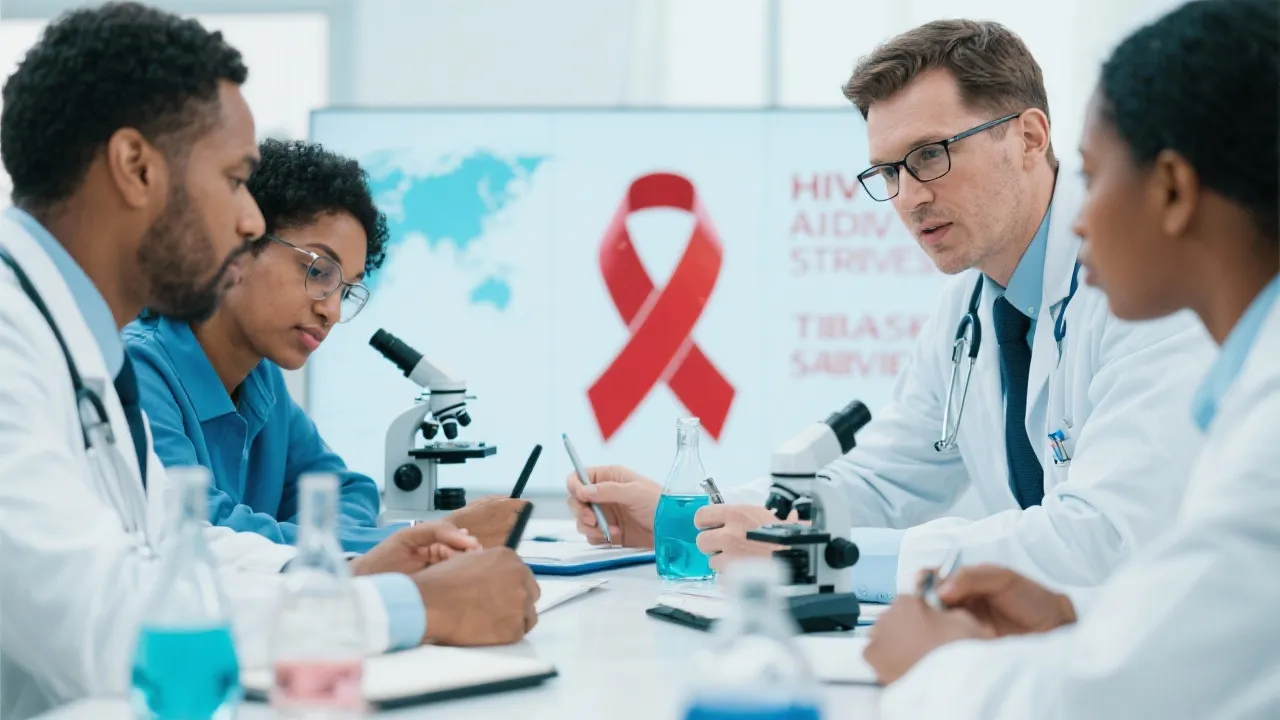This comprehensive guide explores the multifaceted strategies developed to alleviate HIV/AIDS. Since its discovery, HIV/AIDS has profoundly impacted global health, prompting extensive research to reduce its transmission and improve the quality of life for those infected. This study delves into the evolution of healthcare policies, education, and treatment protocols that have shaped global responses to HIV/AIDS.

Human Immunodeficiency Virus (HIV) and Acquired Immunodeficiency Syndrome (AIDS) have become pivotal in defining global health challenges since the late 20th century. The virus attacks and weakens the human immune system, specifically targeting CD4 cells (T cells), which are crucial to fighting off infections. This immunodeficiency makes those infected more susceptible to opportunistic infections and certain cancers. Initially identified in the early 1980s, HIV/AIDS has spurred a wide-scale global response encompassing research, medical treatment, and public health policies aimed at prevention and care for those affected. This article examines the various strategies developed to alleviate the impact of HIV/AIDS on a global scale, providing insights from an expert's perspective, detailing both historical context and future directions for public health measures.
The global approach to mitigating the HIV/AIDS epidemic encompasses a wide range of strategies—each addressing distinct aspects of prevention, treatment, and care. Here's a closer look at some critical measures:
The effectiveness of HIV/AIDS strategies varies globally, often influenced by regional economics, healthcare structures, and cultural attitudes. Below is a table highlighting a comparative analysis of selected global strategies:
| Region | Strategy Focus | Outcomes |
|---|---|---|
| Sub-Saharan Africa | Education, ART accessibility | Decline in new infections, increased life expectancy |
| Asia-Pacific | Behavioral interventions, needle exchange programs | Reduced transmission among drug users |
| North America | Research, ART advancements, prevention programs | Stabilization of infection rates, high treatment success |
| Europe | Screening and HIV testing campaigns, healthcare access improvements | Lower rates of late diagnosis and enhanced retention in care |
| Latin America | Community mobilization, access to ART | Increased treatment coverage, outreach success |
While substantial progress has been made, various challenges persist in the global fight against HIV/AIDS. Ensuring equitable access to treatments remains a critical concern, particularly in low-income areas where healthcare systems are overstretched. Addressing stigma and discrimination associated with the disease also calls for persistent education and advocacy, as stigma can severely limit individuals' willingness to seek testing, treatment, or support. The economic burden of healthcare systems, particularly in times of pandemic conditions such as COVID-19, adds complexity to managing sustained efforts against HIV/AIDS. Developing strategies to incorporate HIV treatment within broader health service frameworks—such as maternal health and tuberculosis care—remains essential for tackling interconnected health challenges.
Moreover, the evolution of drug-resistant strains of HIV presents a significant hurdle for treatment efforts. Continued investment in research and the development of new antiretroviral therapies are essential. The emergence of policies that address social determinants of health, such as poverty and education, will be critical in combating the epidemic. Engaging communities in developing and implementing these strategies ensures that solutions are culturally appropriate and effective. Innovative strategies—including mobile health technologies for reaching underserved populations, telemedicine for providing care, and community health workers for outreach—must be integral to future initiatives.
HIV/AIDS remains a significant global health issue, but through collective efforts in education, prevention, treatment, and policy support, considerable strides have been made in combating the epidemic. It is crucial to ensure that these efforts are inclusive and consider the unique needs of diverse populations. By continuing to address the challenges head-on with innovative strategies and effective resource allocation, the vision of an AIDS-free world can move closer to reality. Strengthening global partnerships, fostering local involvement, and maintaining a commitment to scientific exploration and humanitarian efforts will be key to overcoming HIV/AIDS challenges that persist today and in the future. As we forge ahead, it is imperative to remain vigilant, informed, and responsive to the ever-changing landscape of this epidemic, adopting an integrative approach that spans social, medical, and educational domains for optimal results.
Explore the Tranquil Bliss of Idyllic Rural Retreats

Ultimate Countdown: The 20 Very Legendary Gaming Consoles Ever!

Affordable Full Mouth Dental Implants Near You

Discovering Springdale Estates

Embark on Effortless Adventures: Unveiling the Top in Adventures Made Easy Outdoor Equipment

Unlock the Full Potential of Your RAM 1500: Master the Art of Efficient Towing!

Dodge Ram: Redefining the Future of Full-Size Trucks with Unmatched Power and Innovation

Get New Phones Without Plans Easily

Smart Strategies to Slash Costs on Your Roof Replacement Endeavor
